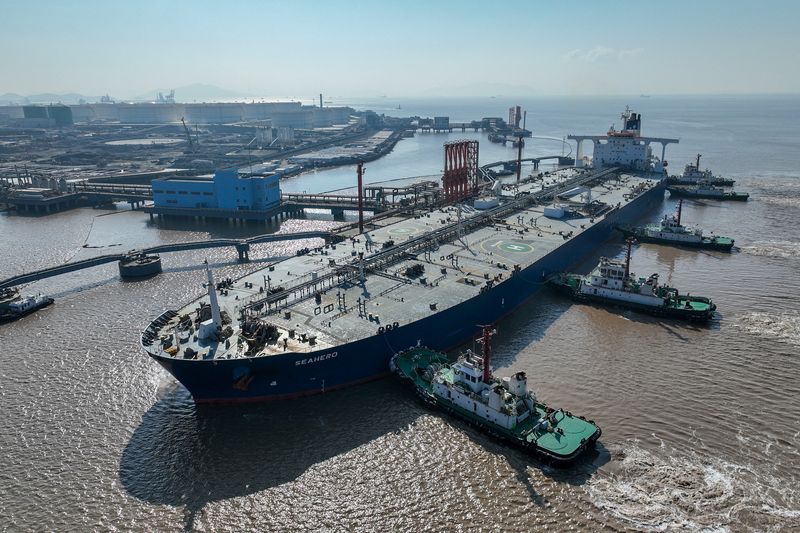
By Shariq Khan
NEW YORK (Reuters) – Oil prices extended their recent recovery rally and rose more than 1% on Thursday as a large cut in U.S. interest rates and declining global stockpiles helped offset some of the demand concerns arising from weak consumption in China.
Brent futures settled at $74.88 a barrel, up by $1.23, or 1.7%. U.S. crude gained $1.04, or 1.5%, to $71.95 a barrel.
Prices have been recovering after Brent fell below $69 for the first time in nearly three years on Sept. 10, and both benchmarks have registered gains in five of the seven sessions since then.
The U.S. central bank cut interest rates by half a percentage point on Wednesday. Interest rate cuts typically boost economic activity and energy demand, but some also saw the large cut as a sign of a weak U.S. labor market.
The Bank of England on Thursday held interest rates at 5.0%.
Declining global crude stockpiles should support oil prices going forward, pushing Brent back above $80 in the coming months, UBS analysts said in a note to clients.
Crude inventories in the U.S., the world’s top producer, fell to a one-year low last week, government data showed on Wednesday. [EIA/S]
The decline in inventories could accelerate next week as U.S. exports should rebound significantly from the disruptions caused by Hurricane Francine last week, strategists at Macquarie told clients.
A counter-seasonal oil market deficit of around 400,000 barrels per day (bpd) will support Brent crude prices in the $70 to $75 a barrel range during the next quarter, Citi analysts said.
Crude prices were also being boosted by rising tensions in the Middle East, said Tim Snyder, chief economist at Matador Economics.
Walkie-talkies used by Lebanese armed group Hezbollah exploded on Wednesday following similar explosions of pagers the previous day. Security sources said Israeli spy agency Mossad was responsible, but Israeli officials did not comment on the attacks.
Weak demand from China’s slowing economy was limiting oil’s gains, said Alex Hodes, oil analyst at brokerage StoneX.
Refinery output in China slowed for a fifth month in August, statistics bureau data showed over the weekend. China’s industrial output growth also slowed to a five-month low last month, and retail sales and new home prices weakened further.
This post is originally published on INVESTING.


